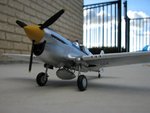silence
Senior Airman
Finally broke down and tried a can. Wow, am I impressed! Shoulda been using these long ago.
(But that may just be the fumes from painting indoors talking!)
Anyway, just thought I'd share that. I may well be buying more in the future!
(But that may just be the fumes from painting indoors talking!)
Anyway, just thought I'd share that. I may well be buying more in the future!









